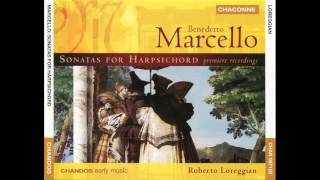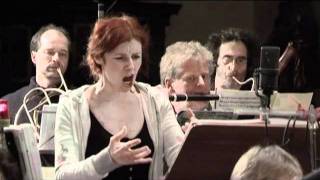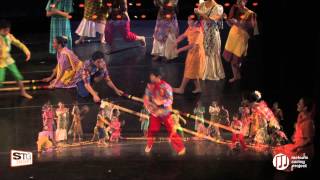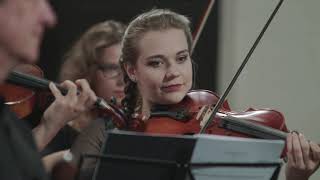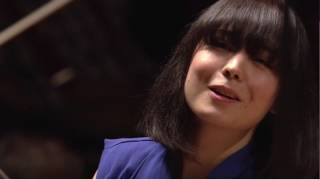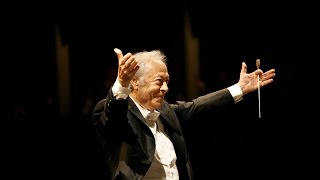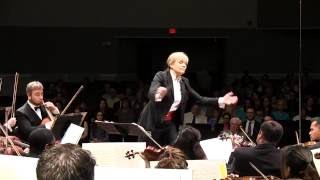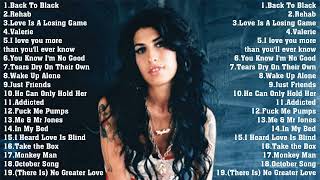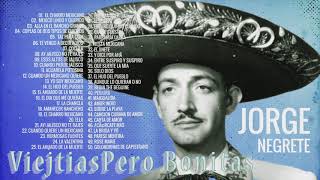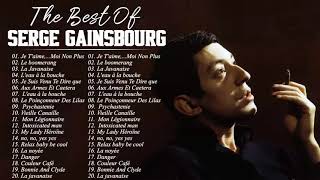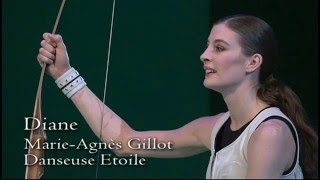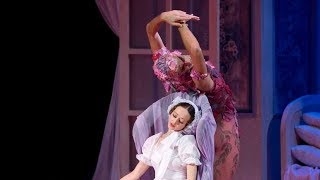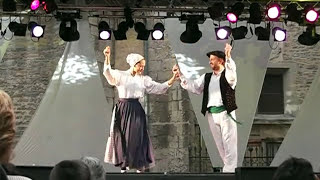Recommended music videos for initiation to classical music
Benedetto Marcello (1686 – 1739) was an Italian composer, writer, lawyer, magistrate and teacher, member of a noble family. His brother Alessandro Marcello (1669-1747) was also a composer of some recognition. Although he studied music with Antonio Lotti and Francesco Gasparini , he was strongly influenced by his father to pursue a career in law. Consequently, he combined his activity in the field of law and the magistracy with music. He composed a considerable volume of sacred music, oratorios, hundreds of cantatas, duets, sonatas, concertos and symphonies. He was well known during his lifetime, and “his music is characterized by imagination and a subtle technique that includes at the same time counterpoint and developed gallant features.”
The Sonata was originally a composition of several sections (usually three or four) written to be played or "sounded" by one or more musical instruments, just as the cantata was to be "sung" by one or more voices. From the Classical period (1750-1810) onwards its definition is adjusted to a work generally structured in three movements (fast-slow-fast) and sometimes four, with or without a short introduction. It should not be confused with the sonata form , which is a compositional model .
The harpsichord , clavichord or harpsichord is a keyboard musical instrument with plucked strings (unlike the piano, which has hammered strings). Its use was widespread in the Baroque Period until the appearance of the Fortepiano, the predecessor of the current Piano , instruments that allow different sound intensities.
Today, with the help of Roberto Loreggian, we offer this album of harpsichord sonatas by Benedetto Marcello
Wolfgang Amadeus Mozart (1756-1791) is considered one of the three giants of musical composition along with Bach and Beethoven . A child prodigy born in Salzburg , at the age of six he mastered the keyboard and the violin and began to compose. His father, Leopold, took him on exhausting tours of various European courts. A prolific composer (more than 600 works written from the age of five until his death), he cultivated all kinds of musical genres: piano works, chamber music, symphonies, concertante works, choral works, operas... each and every one of them a masterpiece of their genre. His operas The Magic Flute, Don Giovanni, Così fan Tutte, and The Marriage of Figaro are among the 10 most performed operas in the world. He died in Vienna at the age of 35.
The Magic Flute is an opera that was premiered in Vienna , conducted by Mozart himself two months before his death. The libretto was written by a fellow member of his Masonic lodge, Emanuel Schikaneder , with a plot that points to the struggle between good and evil, light and darkness, knowledge and ignorance; all of which are fundamental approaches to Masonic doctrine. A narrative full of Masonic symbolism in the incarnation of the characters, in the development of the action and even in the musical structures.
The aria Der Hölle Rache kocht in meinem Herzen (“Hell's vengeance boils in my heart”), today offered by the French coloratura soprano Patricia Petibon , belongs to the second act of the opera The Magic Flute in which the Queen of the Night expresses her anger and her desire for revenge.
The guitar is a plucked string instrument, unlike the piano, which is a percussive string , or the violin, which is a bowed string . After centuries of evolution, the current guitar is made up of the sound box , which has a large hole or mouth at the top, the neck , which is traversed by six strings that run from the bridge to the headstock, or whose pegs are used to tune the strings according to the tension used; on the other hand, the neck is covered by a piece of wood, which is the fingerboard, divided into frets that divide the strings into half tones.
The origin of the guitar dates back to 1000 BC, when the Assyrians already had plucked string instruments with a resonance box; on the other hand, there are theories that claim that the guitar arrived in the peninsula from the Roman Empire , while other theories claim that it was brought to us by the Arabs . In the 14th century, the vihuela with six double strings and the guitar with four already coexisted; in the 17th century, the guitar already had five strings and was known as the Spanish guitar ; in the 18th century, Jacob Otto introduced the six-string guitar and established the current tuning; in the 19th century , the figure of Francisco Tárrega (1852-1909) was essential for the definitive impulse of the guitar and the technique to be used. The Spanish luthier José Ramírez III together with the guitarist Narciso Yepes added four more strings in the bass, on a wide neck whose multiple frets allow to significantly expand the range of sounds of the left hand.
The famous Romance Anónimo , also known as Juegos Prohibidos or Romance Español , is one of the most deeply rooted pieces in the guitar repertoire. There are few compositions that can be mastered by a beginner, and that at the same time remain in the repertoire and discography of the great virtuosos. It is a simple composition and easy to play. However, its melody has captivated and continues to captivate audiences around the world. Over time, news and rumors have spread,... the Romance Anónimo is no longer just a product of Spanish folkloric genius, but also of Ukrainian folklore, and it also seems not to be anonymous, as there is a considerable list of authors who claim, or to whom, its authorship is attributed. (Extracted from the article by Santiago Porras Álvarez published in guitarra.artepulsad.com)
Today we are brought to you by Polish guitarist Ilona Skowrońska .
Henry Mancini (1924–1994) was an American composer, conductor, arranger, pianist, and flautist of film, jazz, and Latin-influenced music. He is best known for his work for film and television. He is frequently cited as one of the greatest composers in film history, winner of four Academy Awards ( Oscars ), a Golden Globe Award , and twenty Grammy Awards , as well as a posthumous Grammy Award for lifetime achievement in 1995. His best-known works include the theme and score for the television series Peter Gunn , the score for The Pink Panther (for which he won a Grammy ), and his collaboration on the Blake Edwards comedies, most notably the song Moon River (from Breakfast at Tiffany's , 1961).
Today we present The Blues Brothers ' version of Peter Gunn's main theme.
Recommended classical music videos
Christoph Graupner (1683 - 1760) was a prolific German composer, noted for the excellent calligraphy of his autographs and copies. Graupner completed his studies in Leipzig with Johann Kuhnau (1660-1722), Bach 's predecessor at St. Thomas Church . In 1705 he took up a position as harpsichordist in the orchestra of the Hamburg Opera , where Handel was a violinist. In 1709 he accepted a position at the court of Hesse-Darmstadt , becoming its conductor and composer in 1711. Graupner was one of the most esteemed composers of his time, like his contemporaries Handel, Telemann and Bach. He was a lively, passionate, cultured man with great professional experience, which endowed his compositions with an outstanding level of invention and originality.
His works are catalogued with the initials GWV (Graupner Werke-Verzeichnis); Werke in German means "work" and Verzeichnis, "catalogue".
The viola is a bowed string musical instrument, similar in materials and construction to the violin , but larger and with a deeper sound. Its range is between the high notes of the cello and the low and medium notes of the violin . The viola is considered the contralto or dramatic tenor of the string family. Its strings are tuned in fifths: C, G, D, A (C being the lowest string).
The viola d'amore consists of seven strings, which were formerly tuned in a variety of ways, apparently depending on the work, with neither composers nor musicians in agreement. Until a famous French player of this instrument, Chrétien Urban (1790-1845), in the 19th century , fixed the tuning as A2, D3, A3, D4, F#4, A4, D5. Beneath the fingerboard there are seven other metal strings tuned in unison with those in the normal position, which produces the conditions for vibrating sympathetically with soft resonance effects.
Today we offer the Concerto for viola d'amore in D major GWV 314 by Christoph Graupner (0´15´´ VIVACE .-. 3´23´´ADAGIO .-. 6´38´´ VIVACE ) performed by the violist Donald Maurice accompanied by the Orkiestra Ars Longa of Poznan conducted by maestro Eugeniusz Dąbrowski .
Ludwig van Beethoven (1770-1827) together with Bach and Mozart is part of the trio of giants of Western music. Born in Bonn , Germany , his father of Flemish origin tried to make him a second Mozart , although it was a notable failure; despite this, from the age of nine the organist Christian Gottlob Neefe , captivated him with the study of Bach . In 1787 he moved to Vienna with the intention of receiving classes from Mozart , but the death of his mother returned him to Bonn a few days later. And so after five years, he returned to Vienna where he contacted Haydn and Salieri, making himself known as a composer and pianist with notable public recognition. However, his profession as a pianist could not be realized due to the deafness that attacked him the following year until leaving him totally incapacitated of this faculty.
The catalogue of Beethoven's works . There are 138 musical works composed by Beethoven , arranged by numbers known as opus (Latin for "work") or its abbreviation op. , assigned by the composer's publishers during his lifetime. In addition, there are another 205 works that do not have opus numbers and that were published after the composer's death. These works were assigned WoO numbers (Werke ohne Opuszahl, "works without opus numbers"). This catalogue was first compiled by Georg Kinsky and Hans Halm (Das Werk Beethovens) in 1955.
Beethoven premiered the Choral Fantasy in a macro-concert that also included the premiere of the Fifth Symphony , the Sixth Symphony , the Piano Concerto No. 4 , the aria Ah, perfidious! and three movements from the Mass in C. This event was the last concert in which Beethoven appeared as a soloist; but since the introductory piano part of the Fantasy was still unfinished, the premiere was given with a piano improvisation by Beethoven himself. The Choral Fantasy has certain similarities to the fourth movement of Beethoven 's Symphony No. 9. Obviously, both employ a chorus; both also contain a set of instrumental variations on the theme sung by the chorus; and the text of both is joyous and comforting.
Today we are treated to the performance by award-winning German pianist Alice Sara Ott, accompanied by the Choir and Orchestra of the Paris Philharmonie conducted by the illustrious French maestro Laurence Equilbey .
Gioachino Rossini (1792-1868) was an Italian composer of 39 operas, various songs, some piano works and some sacred music. He began composing at the age of 12. In 1812 he was hired by La Scala in Milan where he had a memorable success with “La piedra de toque” ; the following year he premiered his first serious opera, Tancredi, in Venice and soon after he premiered another great success, La italiana in Algiers . In 1815 he settled in Naples where he wrote regularly and without stress with rehearsals and regulated dates. In 1822 he moved to Vienna where he met the admired Beethoven . From Vienna to London , back to Paris and after the premiere of his last opera, Guillermo Tell , he abandoned opera at the height of its economic and popularity at the age of 37. He died at the age of 77.
La Petite Messe Solennelle (The Little Solemn Mass) is a sacred composition by Gioachino Rossini , written in 1863 and described by the composer as "the last of my péchés de vieillesse" ("sins of old age"). The ingenious composer, who produced little for the public during his long retirement at Passy (Haute-Savoie, France), premiered his mass – characterised, apocryphally by Napoleon III , as neither small nor solemn nor particularly liturgical – at the dedication of the private chapel of the Countess of Pillet-Will , to whom Rossini dedicated this refined and elegant piece, which avoids the sentimental opulence of most contemporary liturgical works.
Today we are offered the following cast of artists: María José Moreno soprano, Veronica Simeoni mezzo-soprano, Yijie Shi tenor, Mirco Palazzi bass, Choir and Symphony Orchestra of Galicia , all conducted by the Italian maestro Alberto Zedda .
Samuel Barber (1910–1981) was an American composer of chamber and orchestral music. Considered a child prodigy, he began playing the piano at the age of six and composing at the age of seven. In 1958 he staged his first opera, and its success led to a commission for a second lyrical work, Anthony and Cleopatra , which premiered at the opening of the new Metropolitan Opera at Lincoln Center . Barber 's music is elegiac, lyrical, and refined; never abandoning the realm of tonality, he uses a dissonant, sometimes polytonal language; his orchestration is characterized by making the instruments sing. Much of his work is exuberantly melodic and has been described as neo-romantic. He died of cancer in New York in 1981.
Catalogue of Barber's works . His works are classified by their Opus number (from the Latin opus 'work'; op. abbreviation) which is a term used in music to catalogue the works of most composers since the 17th century .
The School for Scandal, Op. 5 is a Concert Overture by Samuel Barber . It is Barber 's first work for full orchestra, composed in 1931 while he was completing his studies at the Curtis Institute of Music in Philadelphia . The title refers to the comedy The School for Scandal written by Richard Brinsley Sheridan ; Barber 's Overture is intended to reflect the spirit of the eponymous work and is characterized by orchestral brilliance and a number of changes in tempo and dynamics. The overture helped establish Barber 's national reputation, and by the 1950s it became a regular part of the repertoire of American orchestras.
On this occasion we offer the Overture The School for Scandal by Samuel Barber performed by the McLean Orchestra conducted by the American maestro Miriam Burns .
Recommended music videos for all tastes
Amy Winehouse (1983–2011) was a British singer-songwriter, best known for her roles in a variety of musical genres, including jazz, rhythm and blues, soul, and ska . In 2003, she released her debut album Frank , which was a commercial success and was nominated for a Mercury Prize . Her second album, Back to Black , was released in 2006 and was nominated for six Grammy Awards , of which she won five. In February 2007, she won the Brit Award for Best British Artist , a World Music Award , and three Ivor Novello Awards. She was found dead in her apartment on 23 July 2011, at the age of 27, after suffering from alcohol poisoning. In 2012, Winehouse was included in VH1 's list of the "100 Greatest Women in Music" (number 26).
Jorge Negrete (1911-1953) was a singer and one of the most emblematic actors of the golden age of Mexican cinema. He entered the Heroic Military College , graduating as a lieutenant of Cavalry and Administration of the Mexican Army with high grades. There he learned to ride a horse, a skill that he would show off by playing the "Mexican charro" in the movies. He studied singing with José Pierson , director of the Impulsora de Opera de México Company , who was a teacher of notable opera singers at the time. After studying singing, he requested leave from the Mexican army to begin his career as a singer and actor. His successful career led him to frequent tours of different countries where he was fervently acclaimed, while in his homeland he was loved and admired as a hero.
Serge Gainsbourg (1928–1991) was a French singer, songwriter, pianist, poet, painter, screenwriter, author, actor and film director, widely regarded as the most important figure in French pop music during his lifetime. Gainsbourg wrote over 550 songs, which have been covered by over 1,000 artists. Since his death, Gainsbourg 's music has achieved legendary status in France , and he is regarded as France's greatest musician and one of the country's most popular and beloved public figures . Serge Gainsbourg has received over ten gold records in France , as well as three double gold records, nine platinum records and one double platinum record. As a singer, he has sold over 10 million records worldwide.
Cesária Évora (1941–2011) was a Cape Verdean singer known by the nicknames "the Queen of Morna" or "the barefoot diva" due to her habit of performing barefoot on stage in solidarity with the homeless and poor women and children of her country. Cesária Évora 's Cape Verdean blues in general speaks of the country's long and bitter history of isolation and the slave trade, as well as emigration, as the number of Cape Verdeans living abroad is said to be greater than the country's total population. In 2004 she won the Grammy Award for Best Contemporary World Music Album for Voz d'amor . In 2007 she was awarded the Legion of Honour by French President Jacques Chirac .
Recommended peculiar videos
Léo Delibes (1836 –1891) was a French Romantic composer. His mother was a musician and his grandfather an opera singer. His nephew Frédéric was the paternal grandfather of the Spanish writer Miguel Delibes . He began his musical studies at the Paris Conservatoire in 1847, where he was a pupil of Adolphe Adam . As a composer he achieved real fame in 1870 with the success of his ballet Coppélia ; among his other ballets Sylvia is also noteworthy ; the Pizzicato from this ballet is very popular, one of Delibes ' greatest hits . He also composed several operas and operettas, a mass, a cantata and occasional music for the theatre, such as dances and ancient airs. Today he is considered one of the most important composers of the 20th century .
Sylvia , originally Sylvia ou La Nymphe de Diane (“Sylvia, or the Nymph of Diana”) is a ballet in three acts, choreographed by Louis Mérante and music by Léo Delibes , first performed in Paris on 14 June 1876 . Sylvia is a remarkable classical ballet, with peculiarities that make it unique for its mythological setting of Arcadia , its creative choreography, its extensive scenography, its great influence on the arts and, above all, its notable score. When Sylvia was premiered on 14 June 1876 at the Palais Garnier , it was widely ignored; it was with its revival in 1952, with new choreography by Sir Frederick Ashton , that it became popular.
Today we offer the entire ballet with Marie-Agnès Gillot, José Martínez and the Paris National Opera Ballet .
Carl Maria Von Weber (1786-1826) was a German composer. From a very young age he learned to sing and play the piano and at the age of 12 he received free lessons in Salzburg from Michael Haydn , brother of Joseph Haydn . In 1812 his father died and the following year he was appointed conductor of the Prague orchestra and later of the Dresden orchestra, while working on his most famous opera Der Freischütz (The Poacher); he also composed two other operas, Euryanthe and Oberon ; all three operas are considered by many critics to be masterpieces of the stage genre. In addition to other operas, he composed numerous songs, piano works, chamber works, two symphonies, several overtures, concertos and concertante works for different instruments, three masses and eight cantatas.
Michel Fokine (1880-1942) was a Russian dancer, choreographer, ballet master and company director, who became a naturalized American citizen. He studied dance at the Imperial School and was a dancer with the Imperial Ballet of the Mariinsky Theatre in St. Petersburg . His total concept of dance and his innovations in the field of choreography, which revolutionized Russian classical ballet, had international repercussions.
The Spectre of the Rose , which we are suggesting today, is a ballet work created by Michel Fokine for a mixed couple of dancers on music written by Carl Maria von Weber for piano. Invitation to the Dance is the title of the piano work written by Weber and later orchestrated by Hector Berlioz . Today it is offered to us by the Ballets Russes .
Basque dances , Euskal Dantzak in Basque, are a very important part of Basque culture and are fundamental to its folklore. Each historical territory or province has its own and each town also has its own dance that is usually performed at its main festivals. Some of them are very old and their origins are lost in time; others are more or less modern recreations of old dances and some are new choreographies based on folklore.
Elai Alai Dantza Taldea is a Basque dance group founded in Portugalete , Bizkaia , in 1962. Since then, the group's personality and prestige have been consolidated within and outside the borders of the Basque Country , thanks to a quiet but constant work of recovery, conservation and expansion of the rich Basque folklore.
Today the Portuguese group Elai Alai Dantza Taldea offers us a potpourri of Basque dances.
Chilean folk dances date back to the native peoples and, in general, had a religious connotation. Over time, they acquired a recreational connotation, thus expanding the variety of dances that today form part of the Chilean cultural melting pot. In Chile , the first manifestations related to dance date back to those practiced by the native peoples, among which the Mapuche dance occupies a prominent place. The conquest and different colonizations generated a fusion whose cultural effects ended up leaving those dances in a marginal place, privileging the eclectic manifestations, among which the greatest paradigm is our national dance, the cueca .
This is how the different areas of the country were identified with different folk dances in view of their own histories and characteristics. The north, with a notable influence from the Altiplano, characterized by its religious festivals among which La Tirana and its corresponding Chinese dances, diabladas and huaynos are emblematic, is gradually distinguished from the central zone, and this in turn from the southern area. Thus, for example, when in the central zone, along with the cueca, dances such as the refalosa and the sajuriana were manifested, towards the south dances such as the pequén, the cielito, the seguidilla or the costillar became widespread. In this last region, Chiloé was established as the most defined cultural unit. In it dances such as the pericona, the turkey, the rin and others present in the central-southern zone of Chile , defined a national folklore in constant dynamics and recreation. (Extracted from Memoria Chilena: National Library of Chile)
Recommended music videos for children
Various Wikipedia articles have been used to write these texts.
The texts of Videomusicalis are written in Basque, Spanish and English.





